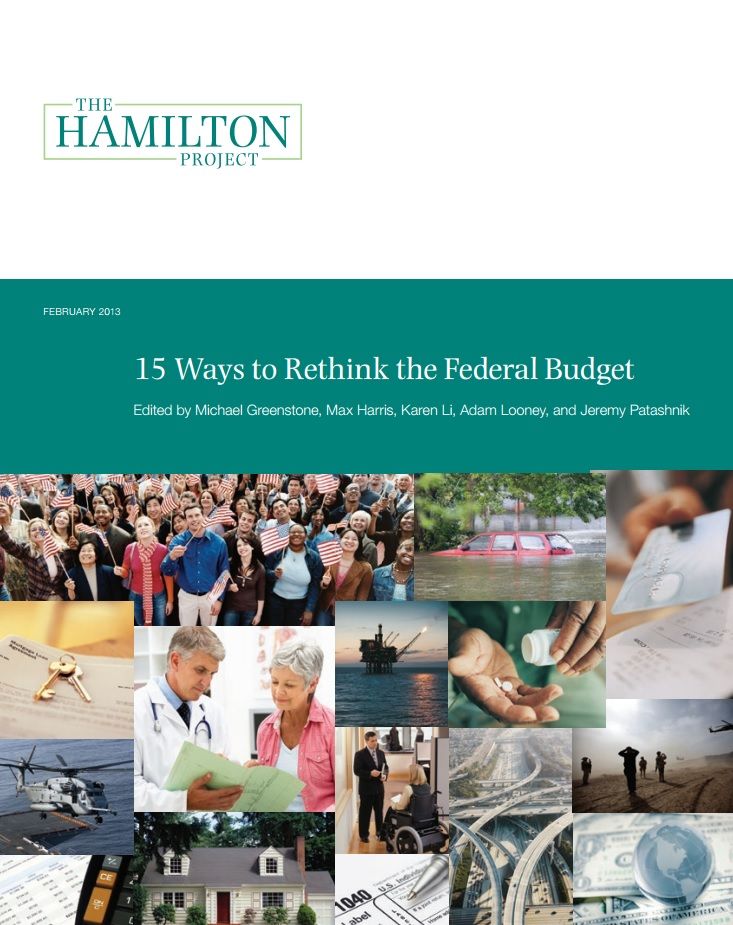
This proposal is chapter ten of The Hamilton Project’s 15 Ways to Rethink the Federal Budget, and a segment in New Sources of Revenue and Efficiency.
“Lawrence Summers of Harvard University explained in a quip why the United States had not adopted a value-added tax so far. “Liberals think it’s regressive and conservatives think it’s a money machine.” If they reverse their positions, the V.A.T. may happen, he said.”
Introduction
The Great Recession and its aftermath have left the United States with a difficult fiscal situation: a weak economy that would benefit from short-term stimulus, but also projected medium- and long-term budget shortfalls, even after the economy recovers, that indicate the need for fiscal consolidation. Addressing these medium- and long-term problems will likely require a combination of spending cuts and revenue increases. While tax reform would be a laudable goal even in the absence of a fiscal problem, building a better tax system becomes even more imperative when revenue requirements rise and the equity and efficiency of the tax code are put under greater scrutiny and pressure.
We propose a value-added tax (VAT) to contribute to the U.S. fiscal solution. A 5 percent broad-based VAT, paired with subsidies to offset the regressive impacts, could raise about
1 percent of GDP, or about $160 billion, per year. Although it would be new to the United States, the VAT is in place in about 150 countries worldwide and in every non–U.S. OECD country. In recent years, the VAT has raised about 20 percent of the world’s tax revenue (Keen and Lockwood 2007). This experience suggests that the VAT can raise substantial revenue, is administrable, and is minimally harmful to economic growth. Additionally, the VAT has at least one other potential advantage worth highlighting: a properly designed VAT might help the states deal with their own fiscal issues. Although a VAT would be regressive relative to current income, this regressivity can be easily offset by transfers that would make the net burden progressive. A VAT should only be imposed after the economy has returned to full employment, as the depressing effects of increased taxation in a demand-driven economy would suppress the economic recovery.
As the United States faces heightened long-term fiscal pressure, policymakers face the challenge of raising revenues in a way that puts as little burden on the economy as possible. While much of the discussion so far has focused on changes to income taxes, a consumption tax—here offered in the form of a VAT—offers advantages over higher income tax rates in terms of economic efficiency.
Like a retail sales tax, a VAT is a tax on consumption. Under a VAT, businesses pay taxes on the difference between their total sales to other businesses and households and their purchases of inputs from other businesses. That difference represents the value added by the firm to the product or service in question. The sum of value added at each stage of production is the retail sales price, so in aggregate the VAT simply replicates the tax patterns created by a retail sales tax and is like other flat tax rates on aggregate consumption. The key distinction is that VATs are collected at each stage of production, whereas retail sales taxes are collected only at point of final sale. This distinction makes the VAT more administrable than a retail sales tax.
In the most common implementation of the VAT, producers are taxed based on their total output, and then receive credit for taxes they have paid on purchases to other firms.1 The tax credit thus acts as an incentive for compliance, and the VAT in practice is less likely to be evaded than is a retail sales tax.2 The VAT is therefore widely preferred to a retail sales tax when considering options for taxing consumption.
A VAT is also border-adjustable, since taxes on exports can be rebated at the border and imports can be taxed at the VAT rate. While this is sometimes touted as providing economic benefits, it is actually a neutral treatment of these items. Taxes assessed on imports ensure an even playing field across imported and domestic consumption goods, and the rebate for exports ensures that exporters are only taxed on the consumption of their product.




